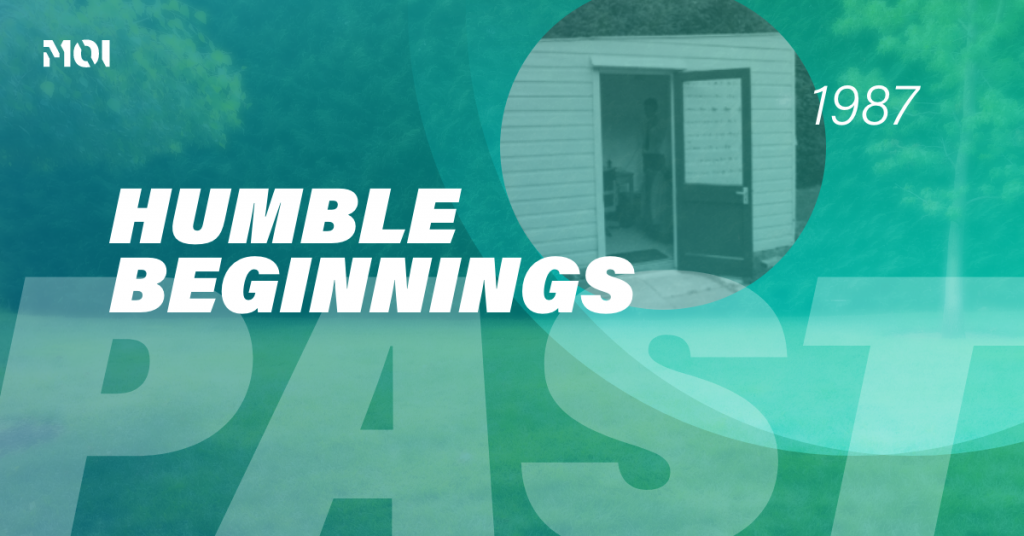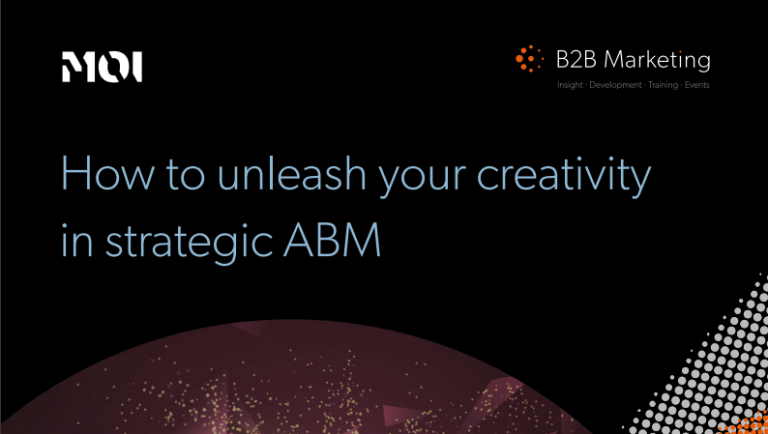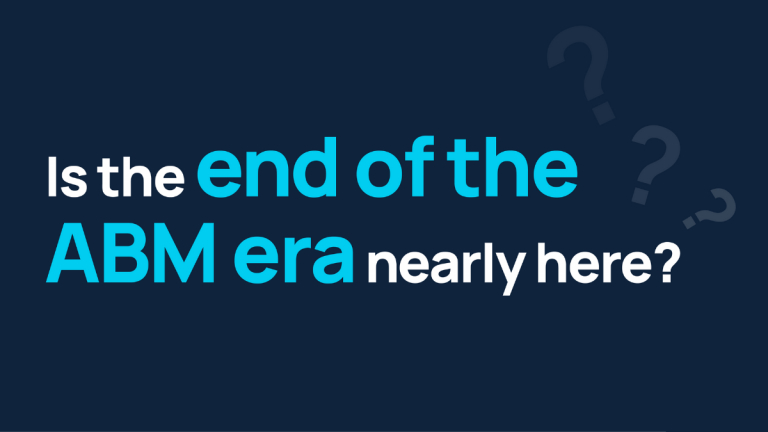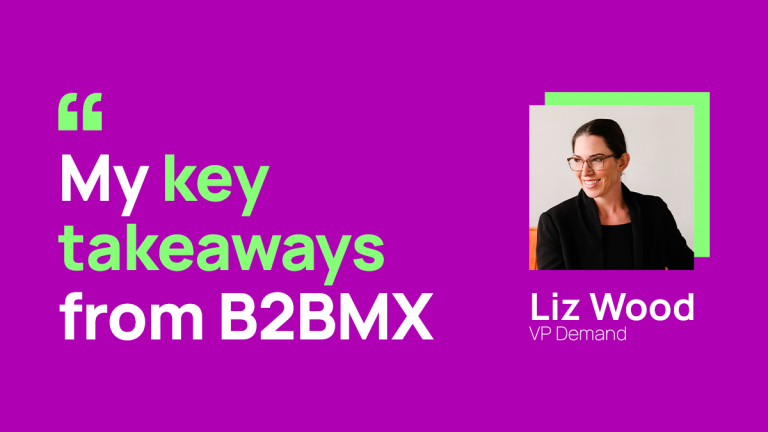
Marketing Options (or MOI Global, as it’s now known) has changed beyond all recognition since I left the business in 1998 to achieve my personal ambition of moving to the South of France (I actually ended up in the South of Scotland instead—for the better climate!).
But I recently heard through the grapevine that the company I co-founded all those years ago has just won the Marketing Agency of the Year award at the UK Agency Awards 2021.
What better time to reminisce about the early days of the agency? In future blog posts, David Haward and Matthew Stevens will tell you all about what the agency’s like now and how it’ll be in the future—but for now, here’s my story of how I co-founded MOI with Phil Payne.
Humble shed—but not so humble beginnings
It was the summer of ’87, and Never Gonna Give You Up was booming from the transistor radio. Yet Phil Payne and I could barely hear Rick Astley over our hammering and sawing as we converted a humble garden shed into a high-tech headquarters. Marketing Options Limited had been born.
Our DIY efforts were a resounding success. The shed/office was so well insulated that, when winter came, the heat from two computers, a photocopier, and a printer was enough to keep these two ambitious entrepreneurs warm.
Our fresh ideas for B2B marketing were a hit with technology brands, and growth was fast and inevitable. That meant we soon had to move to larger offices—first in Esher, then Chertsey, then Weybridge—and all in the first ten years.
So how did we do it? To answer that, I need to take you back to the early 80s, when I met Phil at a successful agency specialising in B2B direct mail.
The 80s was a decade of rapid technological change. Hot metal typesetting was being phased out in the newspaper business. Information technology was replacing the need for compositors and the expensive typesetting process. And as most promotional materials had to be printed, the marketing industry was ripe for a similar transformation.
We wanted to take that technological revolution to our clients. We approached our employer to promote the virtues of desktop publishing, as a way of streamlining the art studio. It would usher in a new, modern way of doing things. It would revolutionise marketing.
Our boss was having none of it.
And that’s when we decided to become our own bosses.
Looking back, it’s hard to appreciate how different the world of business was then. No World Wide Web. No broadband. No smartphones.
It’s especially strange to think that Marketing Options was groundbreaking in our early adoption of Pagemaker, a newly launched and revolutionary desktop publishing software package—something that’s now completely run-of-the-mill.
While our previous boss was reluctant to move with the times, he still taught us so much—he was our mentor. He had an uncanny ability to understand what made people respond to printed business communications. He in turn was influenced by the communications philosophies of Reply-O-Letter, an Ohio-based company whose approach was to focus on the benefits of a product rather than its features. They also focused on how audiences actually engaged with direct mail, using typographical layouts that conformed to known patterns of eye tracking when people read documents.
Phil and I used similar ideas at Marketing Options, but also added our own into the mix. We also wanted to run a tight ship. Keeping costs down and maintaining a positive cash flow were always top priorities. In the very early days, we persuaded one of our first clients to provide computer services in return for a B2B direct marketing campaign.
Above all else, we aimed to always surprise and delight our clients, to exceed their expectations. We did this in all sorts of little ways. For example, it was a company rule to answer the phone within three rings. There was no waiting for hours listening to Vivaldi’s Four Seasons.
We operated a clean desk policy, insisting that all papers and documents were correctly filed at the end of each day. There was no risk of some key document being overlooked because it languished at the bottom of a filing tray or desk drawer.
I guess what really differentiated us most from our competitors was our focus on understanding our clients’ businesses. We went the extra mile to understand what benefits their customers wanted. We sought to understand buying cycles in the hunt to shrink the suspect to prospect to customer process. We routinely went out with our clients’ sales forces to enhance our understanding. This attention to detail was something that frequently impressed our clients.
We couldn’t have maintained these high standards without keeping our new employees engaged and motivated. We knew we were on the right lines when our bank manager, upon reading our rigorously researched business plan, was impressed that one of the new business’s missions was to make sure employees had fun and actually looked forward to coming into work.
I must, however, apologise to our first employee, Nina Kamm. She featured in the first entry of our accident book—she’d been bitten by a ferret! Just one of the dangers of setting up shop in a garden shed, I suppose.
The strong focus on creating great experiences for employees and clients alike, so they could more effectively turn the heads of customers, is what still helps the agency stand out to this day.
I’m semi-retired now, living in the Scottish Borders, but enjoying a new career as an honorary research fellow in the history department at the University of Dundee. I’m also using my new skills to help create the Bill McLaren Rugby Heritage Archive
But the agency is going from strength to strength, with Phil still helping to grow a business that’s now much, much larger. It currently stands at a mind-blowing 170 employees, spread across the world, but I’ll let David Haward continue MOI’s story in the next instalment of this blog series.



